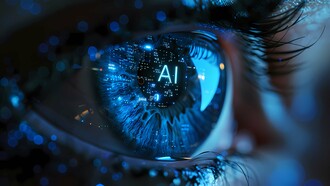Dear Greta,
In 2018, when I met Soumya Dutta, co-founder of India Climate Justice, he spelled out my privileges as a U.S. American. (I think you know what he shared, but I did not.) “In the twentieth century,” Mr. Dutta explained, “the human population increased four-fold, from 1.6 to 6.1 billion people. During the same time, global energy consumption increased between twelve and sixteen-fold1. Whenever one unit of energy is produced and consumed, water, land and other bio-resources are also consumed; and hazardous waste is generated. In other words, because of cars, electricity, air conditioning and televisions, the average person now uses over four times the amount of natural resources that our grandparents consumed. Meanwhile, in 2020, six billion more of us are alive.”
I added two items to Soumya Dutta’s list: because of cars, electricity, air conditioning, the Internet and smartphones, the average person now uses over four times the amount of natural resources that our grandparents consumed.
“Actually,” Soumya Dutta continued, “referring here to ‘average’ people is not correct. According to the World Bank, the average Indian consumes about 630 kilograms of oil equivalent (kgoe) per year. The average Bangladeshi consumes less than 300 kgoe. The average U.S. American annually consumes over 6000 kgoe. “To provide every global citizen with a decent opportunity for a healthy life (starting with clean water and toilets), poor countries with the lowest emissions might need to increase their per capita energy consumption. To reduce human-imposed burdens on natural ecosystems sufficiently, people who consume excessively will need to reduce their energy and water consumption by at least 70%2 and eliminate their greenhouse gas emissions completely.” 3
Soumya Dutta got me wondering how I could reduce my consumption by 70% and eliminate my greenhouse gas emissions.
I challenged myself to reduce my consumption by three percent per month. I stopped using a clothes dryer. I used my solar oven more often. My husband and I planted a bigger vegetable garden.
But then I built a new website about the Internet’s footprint, and I upgraded my desktop computer: I increased my media consumption.
If we call awareness of the Internet’s energy use and greenhouse gas emissions “Step One,” I was at Step One. But I could not figure out how to reduce my footprint. No one can do this alone. We will need every Internet user’s participation.
Behind our screens
Before its end-user turns a smartphone (or any computer) on for the first time, robotic machines must design it. Miners must extract ores. The ores must be washed, then shipped to smelters. Refined materials and manufactured solvents and bent plastics must be transported to assembly plants. Packaging must be designed and built. The final product must be transported to its end-user.
Each station in this international supply chain consumes energy and emits greenhouse gases (GHGs) and toxic waste. Miners and assembly workers often endure hazardous conditions. Rivers and lakes get polluted by “tailings” (emissions from refining ores). Oceans get acidified by cargo ships’ bunker fuel.
Every smartphone includes 1000+ substances4, each with its own energy-intensive, toxic waste-emitting supply chain. When I learned this, I began listing the substances:
- The Case: Aluminum alloys, bromine (for flame retardant), magnesium, nickel, plastic, tin.
- The Screen: Aluminosilicate glass, aluminum, aluminum oxide, cerium, fluorinated chemicals (also in Teflon), gorilla glass, indium tin oxide, lead, nitric acid, oxide of silicon, potassium nitrate, sapphire, silicon dioxide, sulfuric acid, tin oxide.
- The Battery: Aluminum, cadmium, carbon graphite, coal tar, cobalt (children have been maimed and buried alive mining for cobalt), coltan (more people have been murdered over coltan than any other single event since WWII)5, copper, graphite, lead, lithium cobalt oxide, lithium, manganese, mercury, nickel-metal hydride, organohalogen compounds, tantalum, zinc.
- Vibration: Neodymium, tungsten.
- The Camera: Lanthanum, yttrium, copper, gold, silver, cobalt.
- The Speakers: Dysprosium, praseodymium, neodymium-iron-boron, gadolinium.
- The Electronics (i.e. the circuit board, wiring and motors): Acetone, acetylene gas, antimony, arsenic, arsenic pentafluoride, arsine gas, benzene (a solvent linked to factory workers' leukemia)6, beryllium, beryllium oxide, boron, boron tri-chloride, boron trifluoride, cadmium, charcoal, chlorofluorocarbons, chloroform, chromium, coal, copper (for every kilogram of copper mined, at least 21 kilograms of waste are generated), diborane, dysprosium, eucalyptus trees, gallium, gadolinium, gold, glycol ethers, hafnium, hydrochloric acid, hydrogen, hydrogen chloride gas, hydrofluoric acid, indium, lanthanum, lead, methylene chloride, neodymium-iron-boron, n-hexane (another solvent, linked to workers' nerve damage7), nickel, perchloroethylene, petroleum coke, palladium, phosphine, phosphorous, platinum, polychlorinated biphenyl, potassium, praseodymium, quartz, scandium, silicon, silicon tetrachloride, silver, sulfur dioxide, tantalum, terbium, tin, titanium aluminum nitride, titanium nitride, toluene, tri-chloroethylene, tungsten, water, wood, xylene, yttrium, zinc.
Greta, what if every smartphone user researched one of these substances? We could ask: What is this substance’s function in manufacturing or operating the phone? Where is it mined? If it’s a chemical, where is it manufactured? How much does a miner or factory worker earn in a day? How does the work impact their health? Do children work in the mine or factory? Who owns the mine or the factory?
How do mining and smelting the ore or manufacturing the chemical impact waterways, air and land? How is the ore transported to its smelter? How much electricity does the smelter require? What kind of fuel (coal, nuclear, natural gas, hydro) powers the smelter? What kind of carbon (i.e. petroleum coke or burned trees) and what kind of wood are used to smelt this ore? What kind of greenhouse gases and toxic waste does the smelter emit?
What regulations would make mining, refining and/or assembling this substance less hazardous? Can this substance be recycled? What GHGs and toxic waste are emitted by recycling it? How much water is used in recycling?
How to make the Internet’s true costs visible
If every smartphone user studies one of its substances and shares their research with classmates and co-workers, then the Internet's true costs would start to become visible. We could begin to reduce its footprint. Engineers could calculate the environmental costs of "upgrading" to a new device or a new program (which often requires a new computer and then a new printer, each with embodied energy and toxins) rather than repairing what we already own.
Informed about the hazards, consumers could insist that manufacturers prioritize safer chemicals and worker and environmental protections over profit. We could purchase only products with built-in recycling and repairability and that allow easy, fire-proof battery replacement.
We could redefine "essential" online activity. Every user could ask, "What's too much media use for me?" and set their own limits. (Note: a YouTube video uses 24-60 images per second plus sound. A 30-second video typically requires more data and uses more energy than a 3MG photo. Therefore, limit videos and large photos for special occasions). For motivation to reduce our Internet8 footprint, we could stage contests between schools, businesses and neighborhoods.
Yours,
Katie
Notes
1 Smil, Vaclav, “Energy in the twentieth century: Resources, conversions, costs, uses and consequences,” Annual Review of Energy and the Environment; 25(1):21-51, Nov. 2000.
2 Luers, Amy L., M. Mastrandrea, et al., “How to Avoid Dangerous Climate Change: Target for U.S. Emissions Reductions,” Union of Concerned Scientists, 2007.
3 Jarvensivu, Paavo, T. Toivanen, et al., “Governance of Economic Transition,” United Nation’s 2019 Global Sustainable Development Report.
4 Needhidasan, S., et al., Electronic waste--an emerging threat to the environment of urban India, J. Environ Health Sci. Eng., Jan. 20, 2014.
5 Eichstaedt, Peter, Consuming the Congo, Lawrence Hill Books, 2011.
6 Goonan, Thomas G., "Flows of selected materials associated with world copper melting," U.S. Geological Survey, Open File Report, 2004-1395.
7 See the documentary, Complicit, by Heather White and Lynn Zhang, 2017.
8 For resources about the Internet's energy use, worker hazards, greenhouse gas and toxic waste emissions, go to The Campaign to Reduce Our Internet Footprint.















